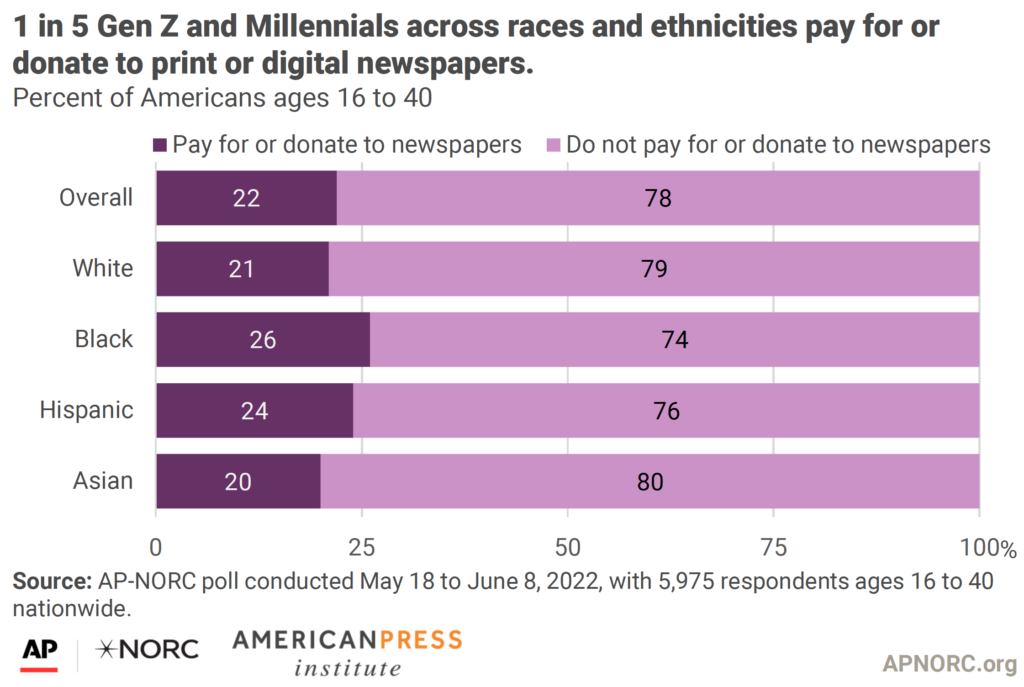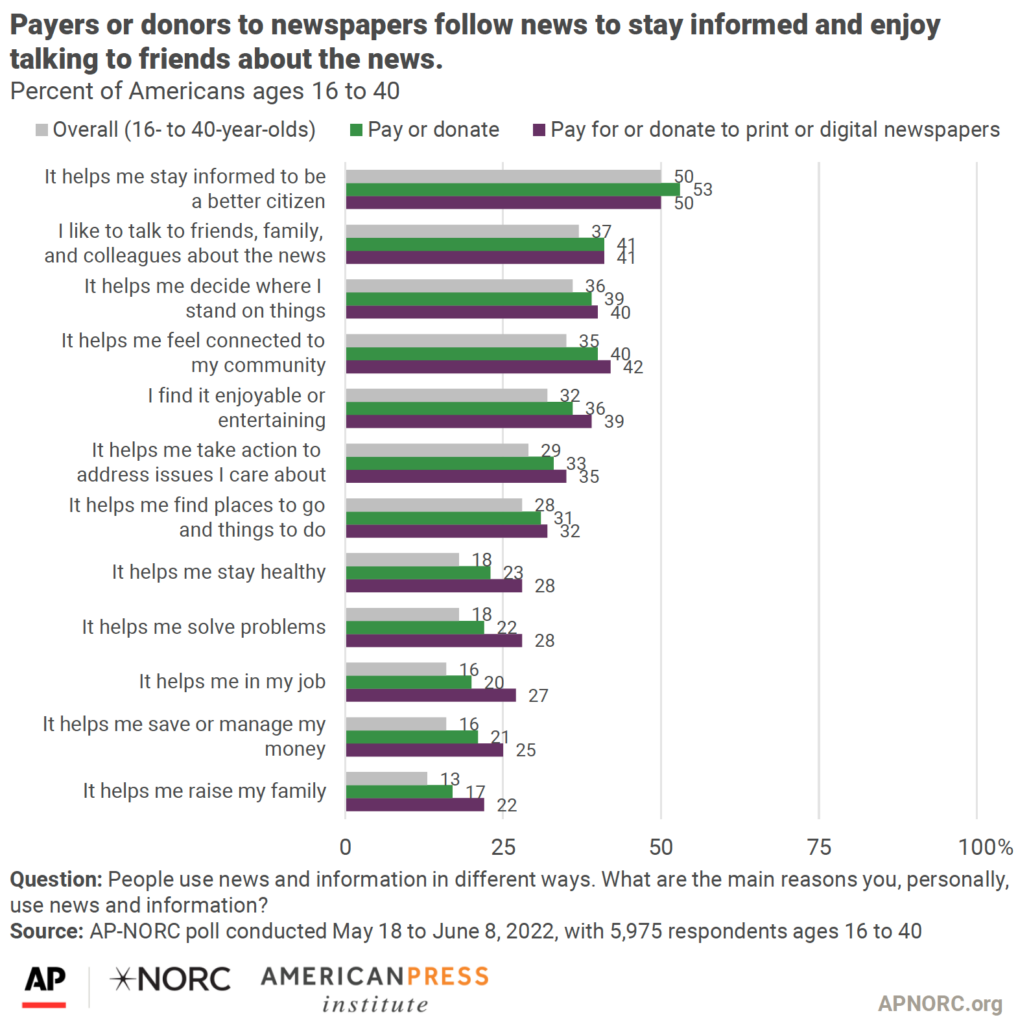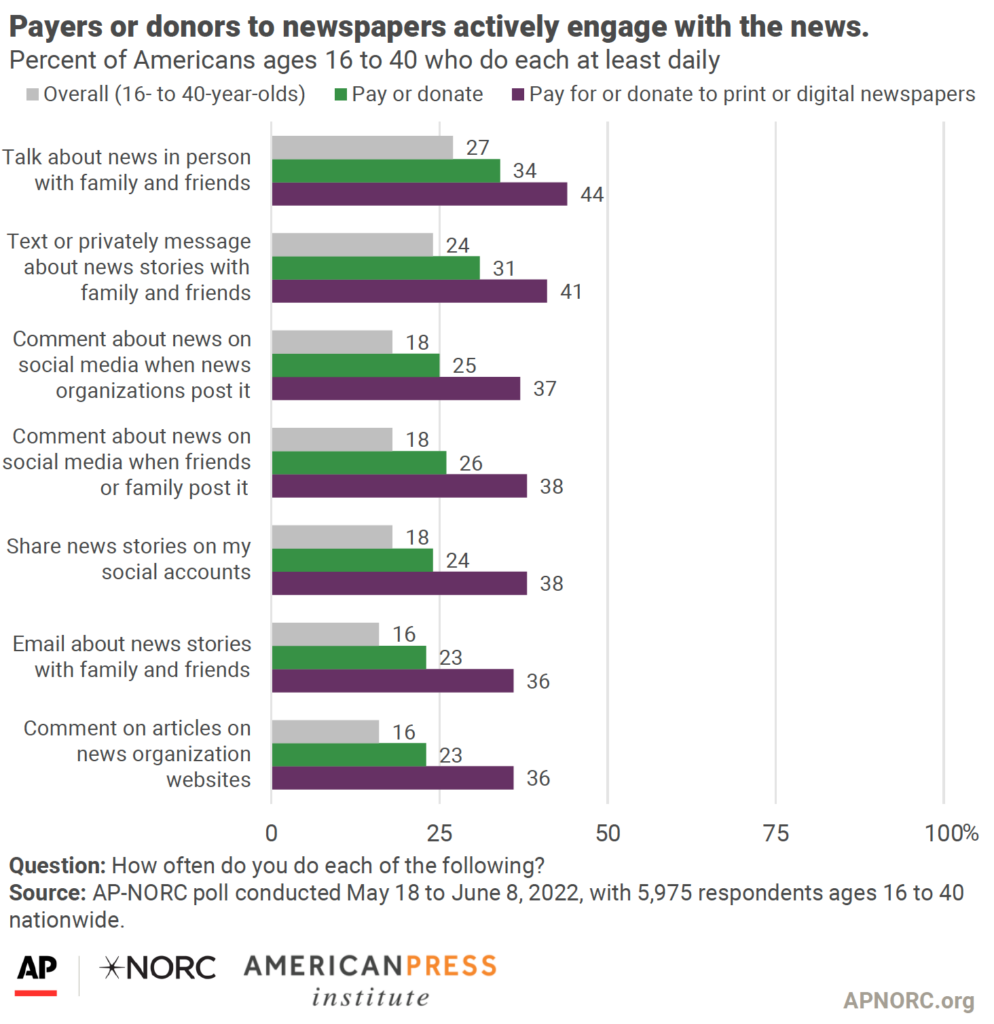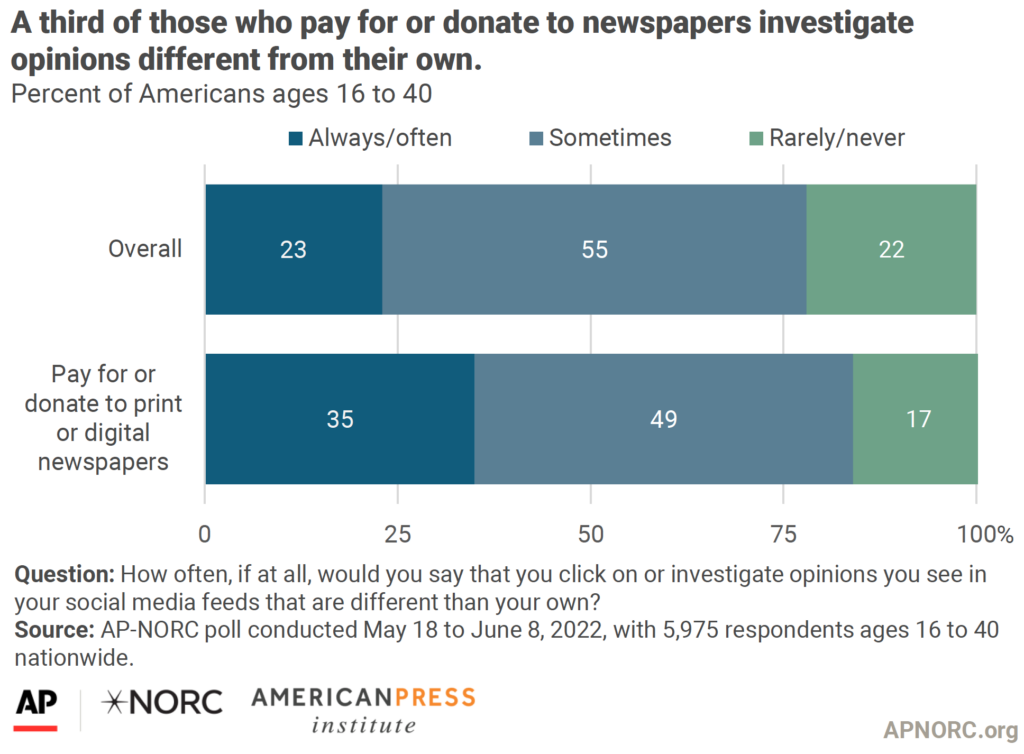When you look at what type of media Americans 16 to 40 are donating to or paying for, it’s about twice as likely they pay or donate to email newsletters or video and audio content from independent creators compared to newspapers.
This and the next chapter examine these two groups in-depth. We start first with those who pay for or donate to print digital newspapers.
Americans ages 16 to 40 who pay for or donate to print or digital newspapers skew toward the oldest cohort we studied. Older Millennials make up nearly half of newspaper payers or donors (46%) while Gen Z makes up a quarter of payers or donors.
Nevertheless, paying for or donating to print or digital newspapers is not entirely uncommon among the youngest cohort. Among all of Gen Z, 16% pay for or donate to digital or print newspapers.
About 1 in 5 Gen Z and Millennials regardless of race pay for or donate to print or digital newspapers.
Millennials and Gen Z who pay for or donate to newspapers live predominantly in urban or suburban communities and tend to identify with the Democratic Party. Those who pay for or donate to newspapers are active news consumers. Fifty-one percent of them say they actively seek out news, 73% use traditional news sources at least daily, and more than 8 in 10 use social media platforms to get news daily or more often.
The main reasons they follow news are to stay informed to be a better citizen, to feel and stay connected to their community, to talk and share with friends and family, and to help decide where they stand on things.
This group also actively comments, shares, or talks about the news with family and friends and through their social media sources or online at least daily. About 4 in 10 say they do one of the engagement behaviors we explore at least once a day, which may be relevant to newspapers since these payers or donors can essentially function as brand ambassadors online. Gen Z and Millennials who pay for or donate to newspapers do these activities even more frequently than payers or donors for news overall.
Gen Z and Millennials who pay for or donate to digital or print newspapers get news and information most often from a variety of social media platforms, yet Facebook, Instagram and YouTube are the ones they use the most. TikTok, Snapchat, Twitch and Twitter are also popular social media sources. Again, this reaffirms the need for newspapers to have a widespread presence across social media platforms.
Gen Z and Millennials who pay for or donate to newspapers follow a combination of lifestyle news, hard news and news you can use. The news topics they follow most often are topics related to celebrities, music, TV, sports, news about COVID-19, and national politics or government.
About a third of those who pay for or donate to newspapers often or always investigate opinions they see in their social media feeds that are different than their own.
This group is aware and pays attention to how certain products try to keep them engaged and connected. They also use apps or settings to track the time they spend on their devices.
Continue reading: Gen Z and Millennials who pay for or donate to email or video content from independent news creators
Share with your network
- Funding news: How Gen Z and Millennials pay for or donate to news
- Which Gen Z and Millennials pay for or donate to news?
- Gen Z and Millennials who pay for or donate to print or digital newspapers
- Gen Z and Millennials who pay for or donate to email or video content from independent news creators
- Study methodology
You also might be interested in:
Successfully and efficiently marketing your work can be hard, especially for local news teams with limited resources, but marketing yourself to your audience is an essential skill for news organizations to drive revenue and promote sustainability.
As news teams begin thinking about their election coverage plans, it may feel like adding more tasks to an already full plate, with a fraction of the staff and resources they once had. But that doesn’t have to mean figuring out how to do more with less — maybe it’s doing less with less.
We reached out to Danielle Coffey, the CEO of American Press Institute’s parent corporation, the News/Media Alliance, to learn more about the legal fight for news organizations’ rights with AI.











